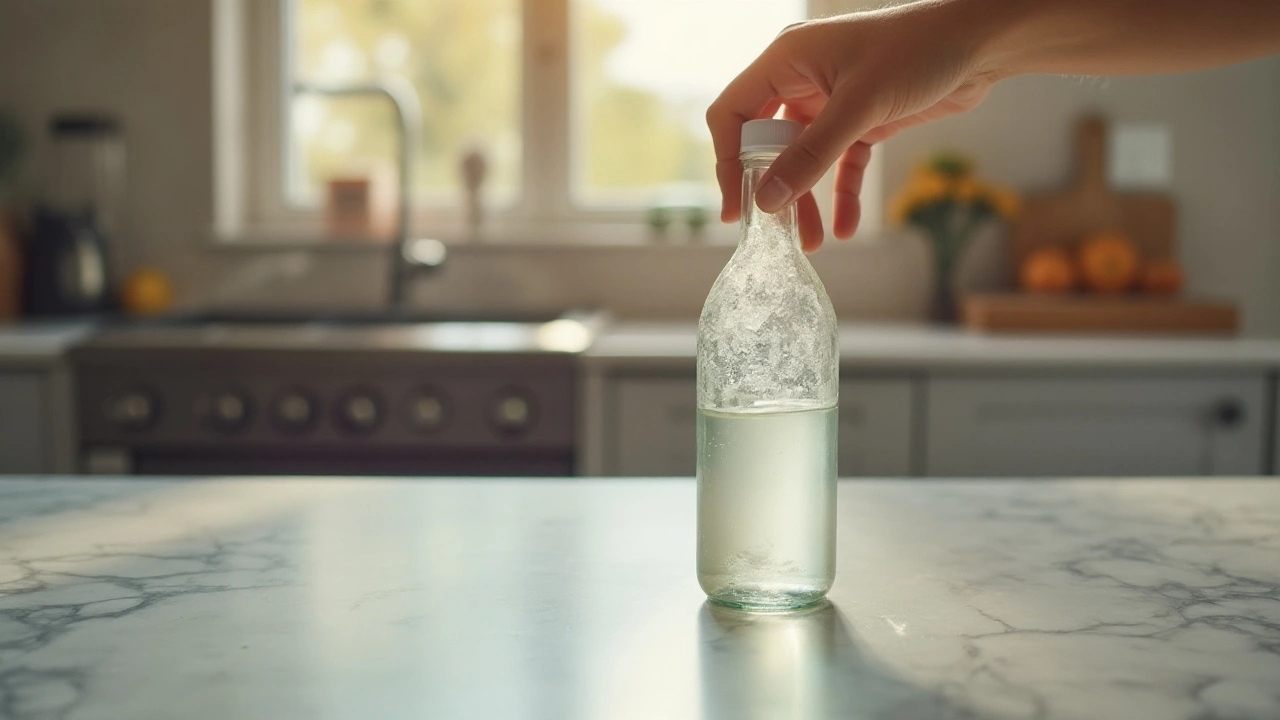Vinegar Cleaning Made Simple – Fresh Results Without Harsh Chemicals
Vinegar is a pantry staple, but most people don’t realize it can double as a powerful cleaning agent. It cuts grease, kills odors, and loosens grime, all while being safe for kids and pets. The best part? You already have it at home, so there’s no extra cost. Below are the most useful vinegar cleaning hacks you can start using today.
Every‑Day Surfaces That Love Vinegar
Start with the kitchen counter. Mix one part white vinegar with one part water in a spray bottle, shake well, and spray straight onto the surface. Wipe with a clean cloth and you’ll see dull spots disappear. For stubborn stove‑top residue, spray the same solution, let it sit for a minute, then scrub with a non‑scratch pad.
In the bathroom, vinegar tackles soap scum on tiles and glass. Heat equal parts vinegar and water on the stove for a few minutes, then pour into a spray bottle. Spray the shower doors, let it sit for five minutes, and wipe off with a squeegee for a streak‑free finish.
When Vinegar Meets Baking Soda – A Dynamic Duo
Combine vinegar with baking soda for tougher jobs. Sprinkle baking soda on a grimy oven rack, then spray vinegar over the powder. The fizz loosens baked‑on grease, making it easy to scrub away. Use the same trick on clogged drains: pour half a cup of baking soda down the drain, follow with a cup of vinegar, cover for 10 minutes, then flush with hot water.
For glass oven doors, create a paste of baking soda and a splash of vinegar. Apply with a soft cloth, let it dry, then buff off for a crystal‑clear surface. This method avoids harsh chemicals and leaves no residue.
Safety note: never mix vinegar with bleach or hydrogen peroxide. The reaction creates toxic gases. Stick to water, baking soda, or lemon juice for safe combos.
Vinegar works best at room temperature; cold vinegar can feel less effective on heavy grease. Warm the solution slightly (don’t boil) for a stronger punch on kitchen messes.
While vinegar cleans many surfaces, avoid using it on natural stone like marble or granite. The acidity can etch the stone and cause permanent damage. For those surfaces, stick to a pH‑neutral cleaner.
Need a quick freshening spray for fabrics? Mix one cup of water, a quarter cup of vinegar, and a few drops of your favorite essential oil. Lightly mist upholstery, let air dry, and you’ll notice odors vanish without water stains.
If you prefer professional help, Fortis Cleaning Solutions offers eco‑friendly services that use vinegar‑based products along with other green methods. Our team can tackle deep kitchen cleans, office sanitising, and end‑of‑tenancy jobs while keeping your indoor air safe.
Give these vinegar tricks a try and see how much cleaner your home feels without spending a fortune. A splash of vinegar, a dash of baking soda, and a little know‑how go a long way toward a sparkling space.

Where to Avoid Using Vinegar for Cleaning Your Home
Vinegar is a versatile and eco-friendly cleaning agent, popular for its effectiveness and natural properties. However, it's important to know where its use might do more harm than good. Some surfaces and materials are vulnerable to the acidic nature of vinegar, which can lead to damage or unwanted reactions. Discover the places in your home that are off-limits for vinegar cleaning and how to care for these areas safely. Arm yourself with the right tips and tricks to maintain a clean and healthy home without compromising on safety.
Read More